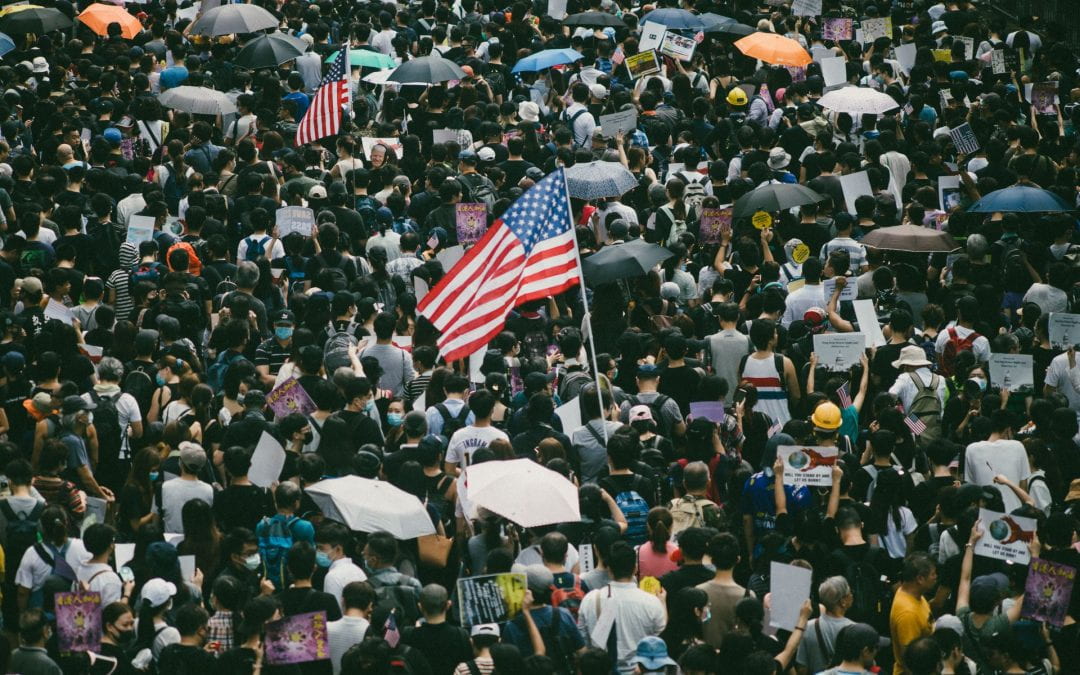By Steve Hoadley
China and the US will not agree on many points of policy. But on one point they will tacitly agree: their ongoing strategic rivalry must be carefully managed to avoid war.
The answer to this Big Q is yes, China-US relations are deteriorating. But three qualifying follow-on questions arise. I address each briefly, then I offer a cautiously optimistic conclusion.
- Does the deterioration impact all aspects of the relationship?
- Is the deterioration getting more severe?
- Will the deterioration lead inevitably to war?
News reports indicate that China-US frictions extend from trade and investment disputes to military and cyber-security issues and further to clashes of values over governance, democracy and human rights. Exacerbated by the Trump Administration, these frictions persist in the current Biden Administration despite the new President’s more moderate rhetoric. The varied bilateral dialogues conducted by the Obama Administration petered out under Trump, and remain suspended. The ad hoc meeting in Alaska in March began with a tense exchange of accusations between the two top China foreign affairs officials Yang Jiechi and Wang Yi and the US secretaries of State and Defense Blinken and Austin. Public suspicion and media polarisation appear to be growing in both countries. A RAND report in 2020 grouped disputed issues into four issue categories: diplomacy, economics, science-and-technology, and military, and showed that all were contested. It appears that a full-spectrum deterioration is in train.
But the actual deterioration is less severe than the pubic rhetoric. Trade continues, albeit constrained by arbitrary tariffs, and American and Chinese firms continue to do business in each other’s markets. Military tensions in the South China Sea and around Taiwan have not yet precipitated an exchange of fire. China’s cyber-mischief has not precipitated sanctions as severe as those that the US has imposed on Russian cyber-meddling. US sanctions of Chinese officials responsible for political repression in Hong Kong and Xinjiang have not been reciprocated tit-for-tat by China (as they were by Russia), indicating a degree of restraint by Beijing. The Alaska meeting later went into private session and the principals identified significant points of mutual interest for future talks. And China’s President Xi accepted an invitation to participate in President Biden’s climate change summit in late April.
Pessimistic analysts think that the threat of war looms on the horizon. But sober leaders appreciate that a conflict between the world’s two superpowers, with Russia supporting China and the western democracies and Japan, South Korea, Taiwan and Singapore supporting the US, would be catastrophic even if it did not escalate to a nuclear exchange. Not only would lives and resources be lost but also commerce, investment, and supply chains would be sundered, and the global economy depressed. Yes, China’s People’s Liberation Army is modernising and deploying further into the Pacific and Indian Oceans, and yes, the US is progressively strengthening its Indo-Pacific strong points and alliances. And China’s declared aim to bring Taiwan under Beijing’s rule backed by shows of military muscle in the Taiwan Strait are worrying. A clash in the South China Sea, or East China Sea, as the US and Japan manifest their Freedom of Navigation policies and island claims in the face of China’s expansive unilateral maritime claims, could ignite a wider conflict.
However, neither side is threatening outright war. China wants mainly to secure its borders, extend it trade network via the Belt and Road Initiative, and legitimise and consolidate the rule of President Xi and the Communist Party by leading a rising standard of living at home. Most China specialists agree that China’s ‘grand strategy’ is to seek respect and equality, not global hegemony. Some even assert that China’s leaders tacitly accept US hegemony since it imposes costs and risks on Washington that China can avoid while concentrating on its own economic growth.
On the US side, President Biden’s aim is to protect the independence of Japan, South Korea, Taiwan, and the Southeast Asian states by providing credible deterrence through military deployments, alliances and partnerships. Biden has asserted his willingness to deal with China when it serves US interests. He seeks common ground on curbing greenhouse emissions, terrorism, COVID-19, and nuclear proliferation, particularly by North Korea and Iran. He values trade and investment with China as long as it is rules-based and not exploitative. His counterpart President Xi values the US market and safe haven for China’s investments.
It is my belief that the current phase of tough public talking is driven by a desire by Beijing’s and Washington’s leaders for domestic political legitimacy and regime consolidation. It is driven by geopolitical uncertainty and heightened nationalism brought about by the erratic and confrontational actions of the Trump Administration and President Xi’s countervailing assertiveness. Once the Biden and Xi administrations are confident that the other acknowledges their values and respects their interests, they will resume negotiating to find common ground as they did during the Obama Administration.
So, the deterioration of relations is bottoming out well short of armed conflict. A phase of wary but relatively stable co-existence will emerge. China and the US will not agree on many points of policy. But on one point they will tacitly agree: their ongoing strategic rivalry must be carefully managed to avoid war.
Stephen Hoadley is a recently retired Associate Professor of Politics and International Relations at the University of Auckland.
Disclaimer: The ideas expressed in this article reflect the author’s views and not necessarily the views of The Big Q.
You might also like:

